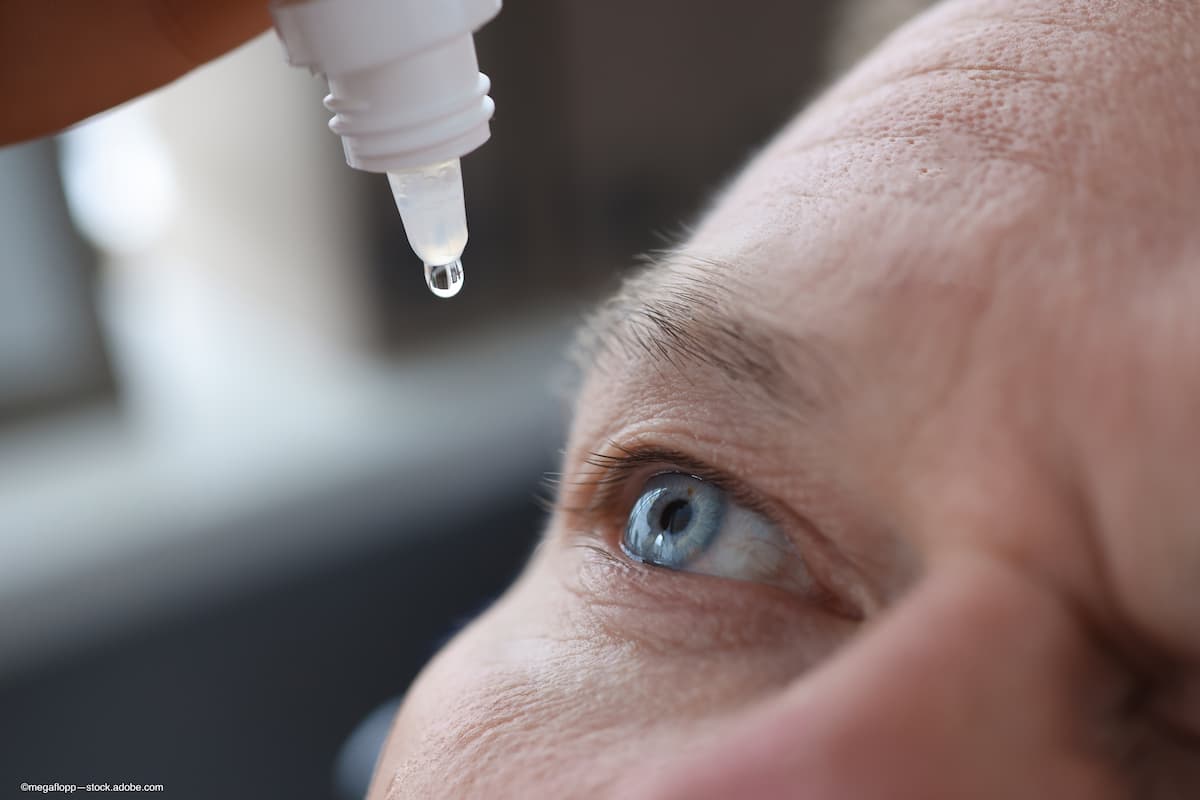Bausch + Lomb launches MIEBO (perfluorohexyloctane ophthalmic solution) in US
According to Bausch + Lomb, MIEBO (perfluorohexyloctane ophthalmic solution) is the first prescription eye drop that targets tear evaporation.
(Image credit: Adobe Stock/megaflopp)

Bausch + Lomb Corp. announced the US commercial launch of perfluorohexyloctane ophthalmic solution (Miebo) for treatment of the signs and symptoms of dry eye disease (DED).
According to the company, perfluorohexyloctane ophthalmic solution is the first and only prescription eye drop approved for DED that directly targets tear evaporation.
In a news release, Andrew Stewart, president, Global Pharmaceuticals and International Consumer, Bausch + Lomb, pointed out that more and more Americans are suffering from dry eye disease, due in large part to today’s multi-screen lifestyles.
“With MIEBO, eye care professionals now have a prescription eye drop that directly addresses tear evaporation, the leading cause of dry eye disease,” he said in the news release.
According to Bausch + Lomb, more than 38 million Americans are impacted by DED, and nine in 10 experiencing evaporative dry eye.1,2 When not addressed, tear evaporation may lead to worsening of the condition by triggering a cycle of inflammation and ocular surface damage.3,4
The company noted in its news release that perfluorohexyloctane ophthalmic solutionis a single ingredient, water-, preservative- and steroid-free prescription eye drop that spreads quickly and comfortably. It is designed to address the signs and symptoms of DED by reducing tear evaporation at the ocular surface.5-7
The companies noted that the FDA approval was backed up by positive data from the GOBI (NCT04139798) and MOJAVE (NCT04567329) phase 3 pivotal clinical trials, which included 1217 patients who were diagnosed with DED as well as clinical signs of meibomian gland dysfunction (MGD), consistently meeting primary clinical sign and patient-reported symptom end points in the trials.
In the clinical trials, MIEBO delivered significant improvements in the signs and symptoms of DED and consistently met its primary clinical sign and patient-reported symptom endpoint. The most common adverse reactions experienced with MIEBO was blurred vision (1% to 3% of patients reported blurred vision and eye redness).
Treating evaporation as the underlying source of DED signs and symptoms could help break the cycle of chronic disease and help restore ocular surface homeostasis.
Perfluorohexyloctane ophthalmic solution is designed to mimic a key function of natural meibum by reducing tear evaporation. Meibomian glands produce meibum, a lipid-rich secretion that forms the tear film lipid layer and helps to maintain a healthy ocular surface.
Clinical Data
In the GOBI and MOJAVE studies, the 2 primary end points were change from baseline at week 8 (day 57 ± 2) in total corneal fluorescein staining (tCFS) and eye dryness Visual Analog Scale (VAS) score. Patients experienced relief of symptoms as early as day 15 and through day 57 with significant reduction in VAS eye dryness score favoring perfluorohexyloctane ophthalmic solution observed in both studies. Additionally, at days 15 and day 57, a significant reduction in tCFS favoring perfluorohexyloctane ophthalmic solution was observed in both studies.
The most common adverse reactions experienced with perfluorohexyloctane ophthalmic solution were blurred vision (1.3% to 3%) and eye redness (1.3%-3%).
References:
1. Downs P. 2020 Dry eye products market report: a global analysis for 2019 to 2025. Market Scope; 2020.
2. Lemp, MA, Crews, LA, Bron AJ. (2012). Distribution of aqueous-deficient and evaporative dry eye in a clinic-based cohort: a retrospective study. Cornea. 31(5), 472-478. 2012;31(5):472-478. doi:10.109/ICO.0b013e318225415a.
3. Craig JP, Nelson JD, Azar DT, et al. TFOS dews II report executive summary. Ocul Surf. 2017;15(4):802-812. doi:10.1016/j.tos.2017.08.003.
4. Baudouin C, Messmer EM, Aragona P, et al. Revisiting the vicious circle of dry eye disease: a focus on the pathophysiology of meibomian gland dysfunction. Br J Ophthalmol. 2016;300-203. doi:10.1136/bjophthalmol-2015-307415.
5. Data on file.
6. Nichols KK, Foulks GN, Bron AJ, et al. The international workshop on Meibomian gland dysfunction: executive summary. Invest Ophthalmol Vis Sci. 2011;52(4):1922-1929. doi:10.1167/iovs.10-6997a
7. Borchman D, Vittitow J, Ewurum A, Veligandl SR. Spectroscopic study of perfluorohexyloctane human Meibum interactions. Invest Ophthalmol Vis Sci. 2022;63:1525.
Newsletter
Want more insights like this? Subscribe to Optometry Times and get clinical pearls and practice tips delivered straight to your inbox.